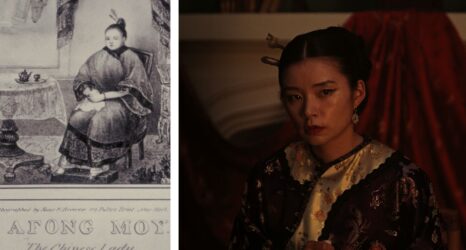Widely recognized as the first feminist film in history, La Souriante Madame Beudet—The Smiling Madame Budet—is not quite the light afternoon treat.
Fairly detached from the nowadays concept of women empowerment as portrayed in the media, it brings a new perspective on what feminism grounds on, leading back to the roots of its original display on film. A short, silent black and white momentum of a life so dangerously common and peculiar in representation.
Shot in 1922 and directed by French surrealist director Germaine Dulac,La Souriante tells the story of a bright woman trapped in the monotony of a marriage and life in which she doesn’t find meaning and fulfillment. Madame Beudet is psychologically abused by her husband, whose attemptS to control all aspects of her social existence are harrowing. From keeping the key to her piano—one of her last resorts to a personal, unviolated space—to constantly rearranging the flowers she originally aligned, this practice of subtle personality subordination, of amending the other in name of assumed dominance, leaves Dulac’s signature needled. She plays the game of symbols with austere grace and manages to smoothly escape marriage colloquialism by focusing on rituals and objects and investing them with additional meaning, able to speak more and louder about the relationship.
Monsieur Beaudet bends his wife’s household duties to his authority, an act through which even her appointed identity is held under command. The protagonist is only left with dreams to escape a reality which makes her unable to function as a human being. This is when Germaine Dulac’s daring work oversees realism and takes over impressionism with robust force. Madame Beudet lives in her own world, full of anxieties and distorted, dream-like images, in which short moments of freedom (such a playful, impaired word if contextualized) are her only escape. In one scene, she even envisions a magazine-cover tennis player taking over her husband’s essence of authority, as a breath-in-and-out juncture.
Dulac’s unusually powerful imagery concentrates on the inside of her character as opposed to other male directors of her time who opted for a more direct, frank approach, not leaving much space for feminine portrays outside of physical and romantic appearances. Madame Beudet is a psychologically paralyzed woman, and it takes courage to state this truth, let alone acknowledge its implications in the past century’s early 20’s. In France, women were not allowed to vote until 1944. Dulac showed a woman unable to vote for her own sense of being. As vote(able) as this was and still is.
The second part of the film showcases the woman’s walks towards the triggering mirror. She is a middle-aged woman, and one her last resorts (her beauty) begins to fade away. Madame Beudet mourns the only thing that she has ever truly been in possession of: her looks. Dulac steps up with a wonderful quest in showing this type of loss on film: a life occasionally projected in the confines of plain superficial beauty in order to contain the missing and award some sense of control to the dispossessed. If other women might have been, at least, in charge of their household routines, this character is left without any coping instruments.
The storyline revolves and eventually wraps up around one of Monsieur Beaudet’s weird playing habits involving an empty revolver and intentionally charged bullets. Circumstances lead to a scene where he is confronted with the possibility of his wife’s death and he comes to realize that he would not be able to live in the absence of her. The game is artistically manipulated by Dulac as the ultimate escape room for Madame. For the social, inexperienced eye. The possibility of her salvation remains questionable and, though sprinkled with a wave of sudden affection, a methodical, sad walk towards a very estranged self.
In a reckless manner, the film resembles what the Feminine Mistique came to assert forty years later in the US.’’The problem that has no name’’ had many more identities under its belt this time. Singularity could not be put in a corner, with its hands upright any more. The eerie unhappiness enacted by Madame Beudet with violent beauty had very practical grounds. The raw value of both the works of Friedan and Dulac connects on the middle ground of revolutionary and at the time (thought) unnecessary voicing of the experience of millions of married women.
As an art product, the film is a must-see for all women and men interested in learning about the development of feminism on camera, about the social representations of women in a century which consumed so many of their gifts, years, and minds. It is time that we acknowledge the presence of women directors and their pioneering work, for so long neglected or looked upon with skepticism. Germaine Dulac might be a start.





